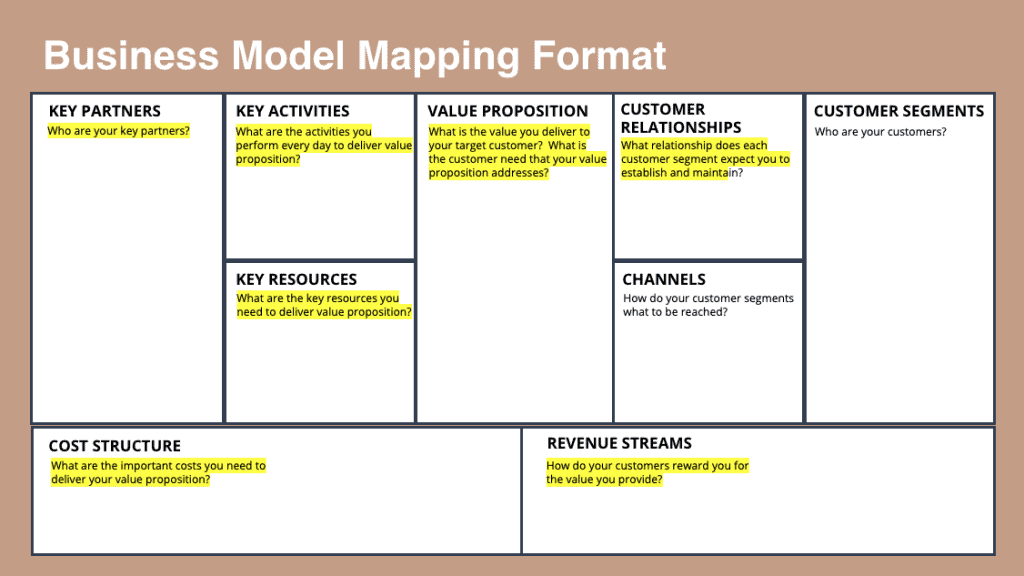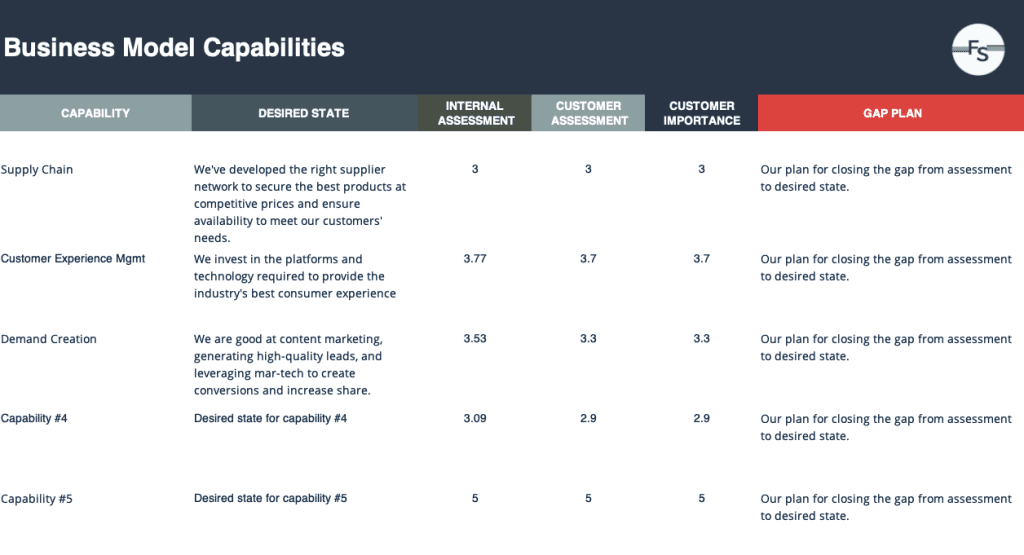Do you want to increase your value to your customers and grow your business? Then you are exactly where you need to be.
I’ll show you an excellent way to use business model capabilities analysis to identify the most crucial process to improve to increase your value to customers and ultimately drive business growth.
Processes are essential to your business success for two reasons; they ensure quality and help you scale. But processes can break down or become ineffective over time. Sometimes this breakdown is evident, and other times it’s insidious, quietly limiting your organization and your results.
With limited resources and capacity, you can’t fix all the broken processes and could be optimized. So how can you identify which one deserves your attention?
Here’s my step-by-step process using business model capabilities analysis to focus your improvement efforts on (even the one you didn’t know was holding you back).
Two Types of Capabilities
Most teams perform an organizational capabilities analysis as part of the strategic planning process, but I include another analysis when working with clients: business model capabilities.
Let’s define these two types of capabilities.
Organizational Capabilities
These are the capabilities your business must have to fulfill its purpose or mission. These capabilities are not dependent on the business model. Here are a few capabilities I like to consider when working with my clients (for a complete list, download my Capabilities Assessment Template). I’ve identified the capability and an example of what the desired state might be.
-
- Talent Acquisition: “We are good at attracting, motivating, developing, and retaining qualified people.”
- Customer Value: “We are good at creating value for target customers and building enduring relationships that make it difficult for customers to leave us.”
- Agility: “We are good at adapting, making decisions quickly, and succeeding in rapidly changing, ambiguous, or turbulent environments.”
Business Model Capabilities
Business Model Capabilities are those capabilities you must master to optimize results based on your business model for delivering value to customers, employees, and all other shareholders.
A company can require more than one business model to serve different customer segments. In that case, you’d want to analyze the capabilities needed for each business model. Here are a few business model capabilities using a B2B eCommerce business as an example:
- Supply Chain: “We’ve developed the right supplier network to secure the best products at competitive prices and ensure availability to meet our customers’ needs.”
- Customer Experience Management: “We invest in the platforms and technology required to provide the industry’s best consumer experience.”
- Demand Creation: “We are good at content marketing, generating high-quality leads, and leveraging mar-tech to create conversions and increase share.”
Of course, improving both organizational and business model capabilities is necessary.
If you’re looking to find the source of the most significant opportunity to increase your value to your customers and grow your business, start with business model capabilities. These capabilities directly impact the customer experience the most and deserve priority attention.
Defining Business Model Capabilities
I use Strategyzer’s Business Model Canvas for many purposes in working with clients, but it’s one of my go-to tools for assessing business model capabilities. I like this framework because it captures the essential elements you must do well to deliver value to your customers, employees, and stakeholders.
The parts you’ll identify in the highlighted sections of the business model canvas below will be the capabilities required for your business model.

Step #1. Populate the Canvas
Step #2. Highlight Critical to Customer
Accessing the Critical Business Model Capabilities
The next step is to assess how well you perform against the desired state for each of these priority capabilities.
Internal Assessment
Here’s an example of how that might look.
Customer Assessment
Compare Results
The following is an example of how the analysis might look. You can download my capabilities analysis tool to help you generate these excellent reporting tools by requesting the guide below.


FREE Download Capabilities Analysis
I’ll send you a spreadsheet with instructions, gap analysis form, and spider charts to help you with this important analysis.
Determine Which Process to Improve
As a result of this business model capabilities analysis, you might find several areas you want to improve, but expanding your focus will also dilute the impact. And organizations rarely can take on a lot of process improvement anyway. I recommend focusing on one capability and process at a time.
First, from the analysis performed above, we need to determine the priority capability to select, and then we’ll decide which process has the most effect on that capability.
Determine The Capability
If it’s essential to your customer and it’s not a competitive strength for you, drop everything and address the problem.
Select the Process
Typically, several processes make up a business model capability, so you’ll want to identify the process that needs the most attention. Work with a cross-functional team to identify and prioritize which process is causing the biggest challenge.
PRO TIP: When dealing with process-level improvements, it’s best to involve middle-level management and their direct reports. They are closest to the process and have the best understanding of what’s happening. In other words, this isn’t an Executive or Leadership Team exercise if you want to get the best results.
Improve the Process
Once you’ve identified the process you want to improve, a root cause analysis will show you where the problem is so that the team can focus on solutions. I’ll refer you to my blog post, Uplevel a Core Process, for a complete guide on the process improvement process. I also include links to root cause analysis tools you can use to guide your team that I think you’ll find helpful.
With limited resources and increasing demands on your business, process improvement can seem like an overwhelming challenge. But if your focus is growth and increasing value to the customer, following this method of utilizing business model capability analysis will deliver high-impact results.
By focusing on your business model’s elements essential to creating customer value and understanding how your customers assess your performance, this method will also uncover process improvement opportunities you didn’t know existed.
If you’d like me to guide your team through this process or any other areas of strategic planning, please contact me for an exploratory call. And if you know someone who would appreciate this guidance on process improvement that drives growth, please share this post with them.
Work well,


